
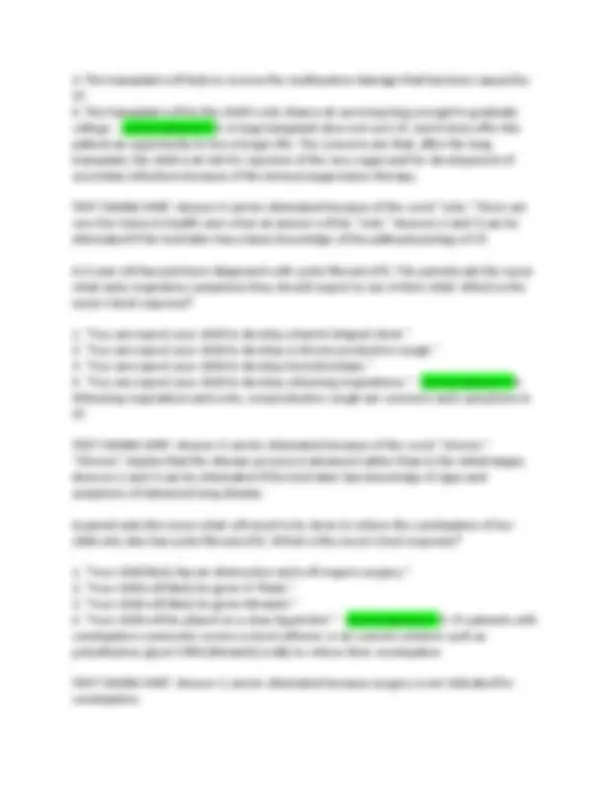
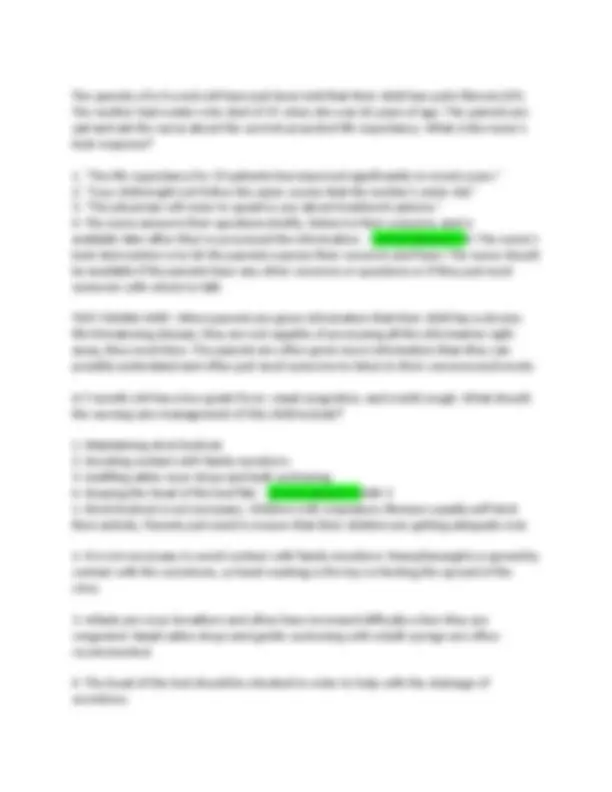
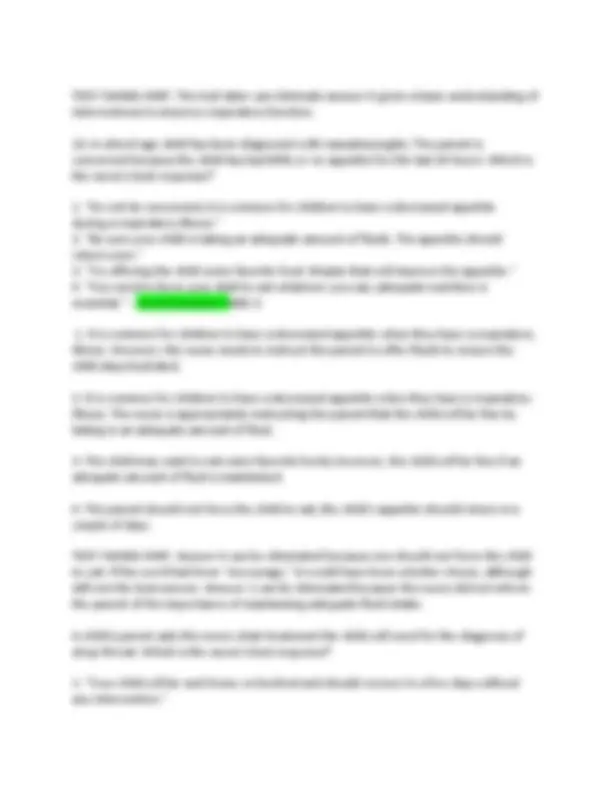
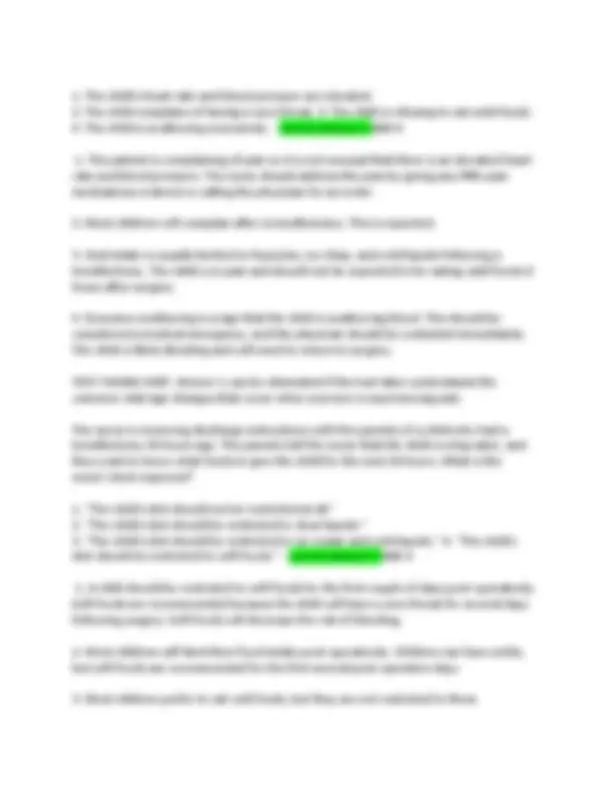
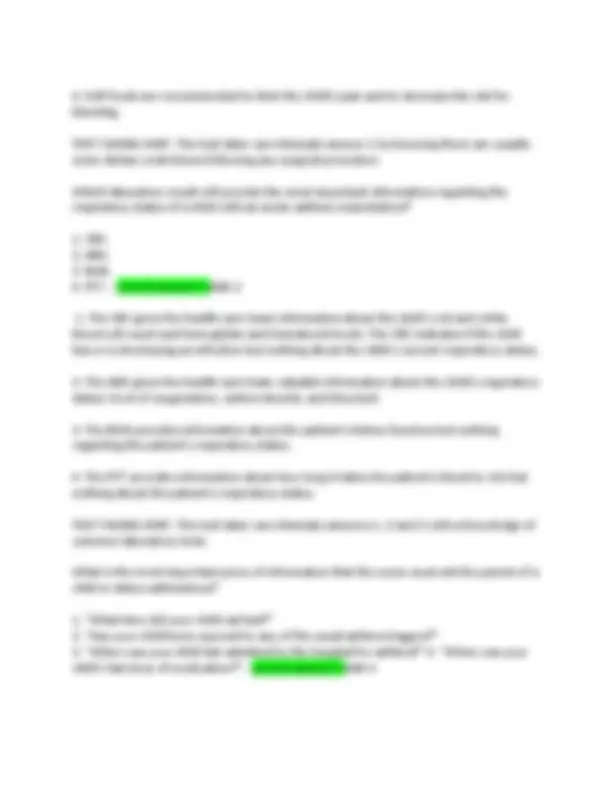
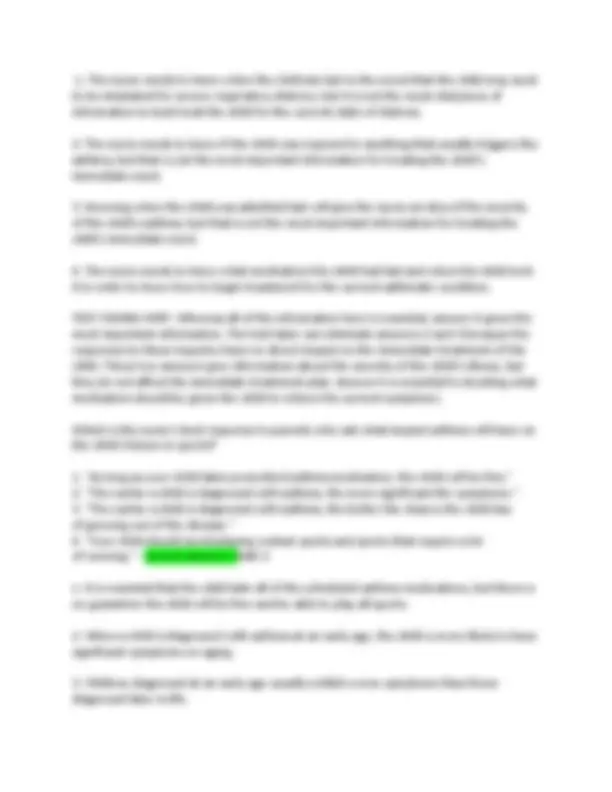
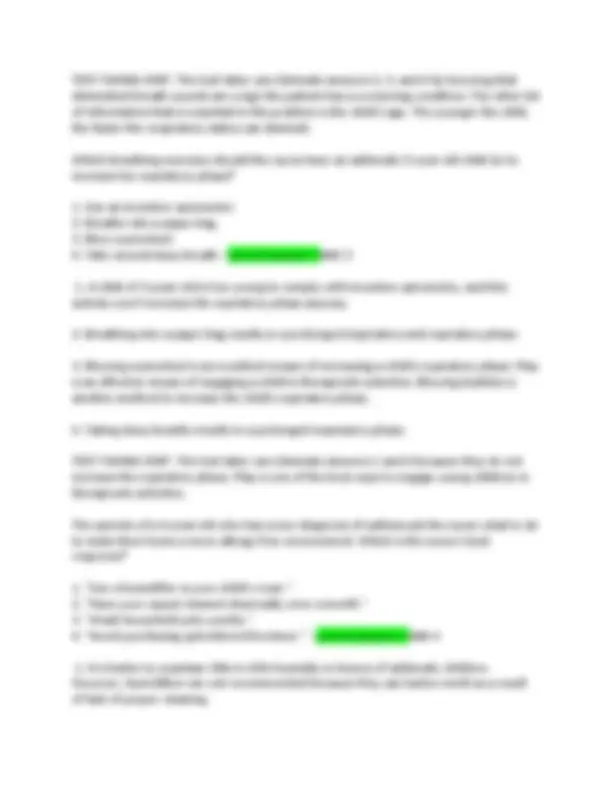
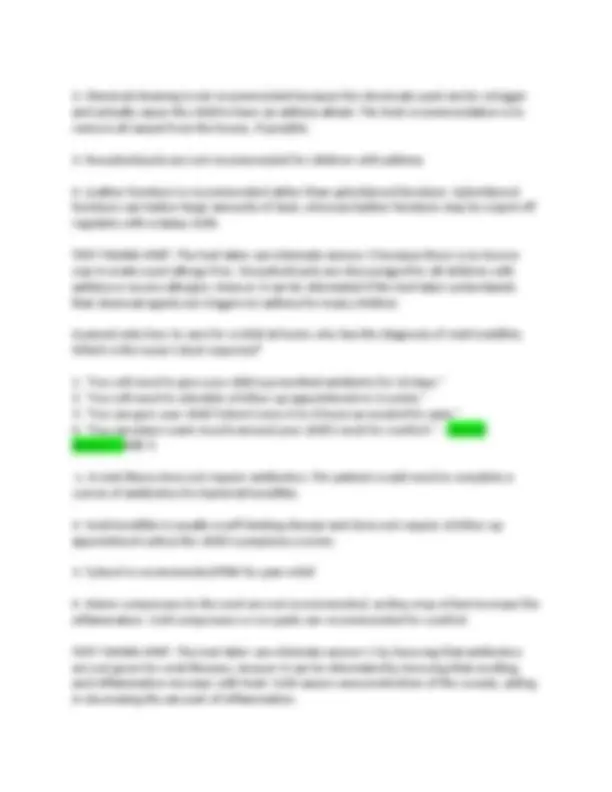
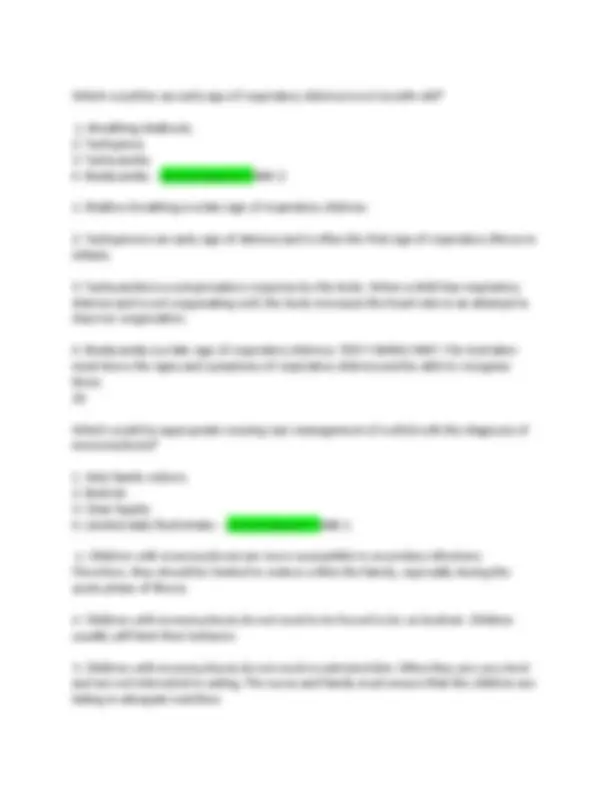
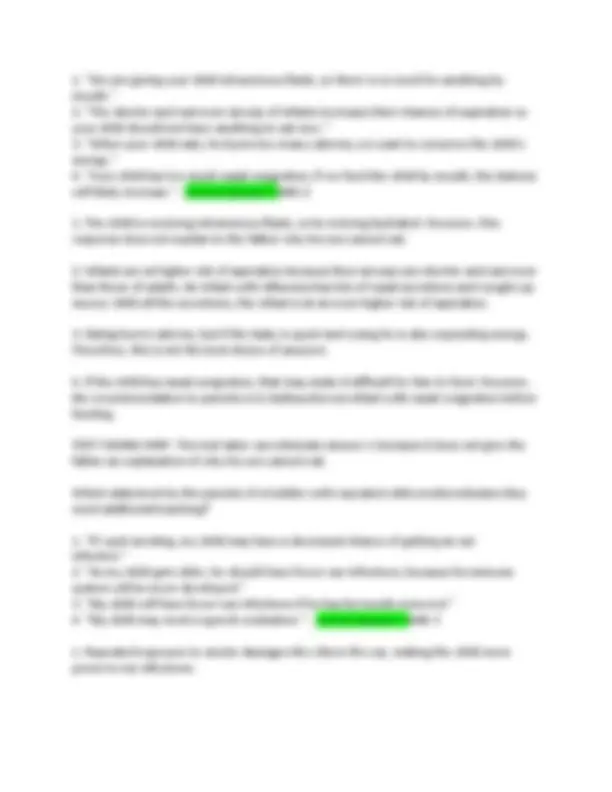
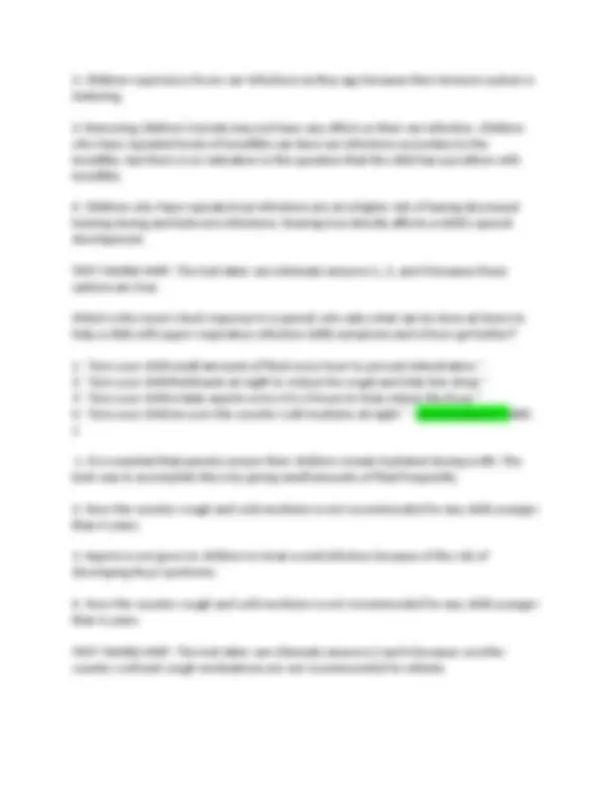
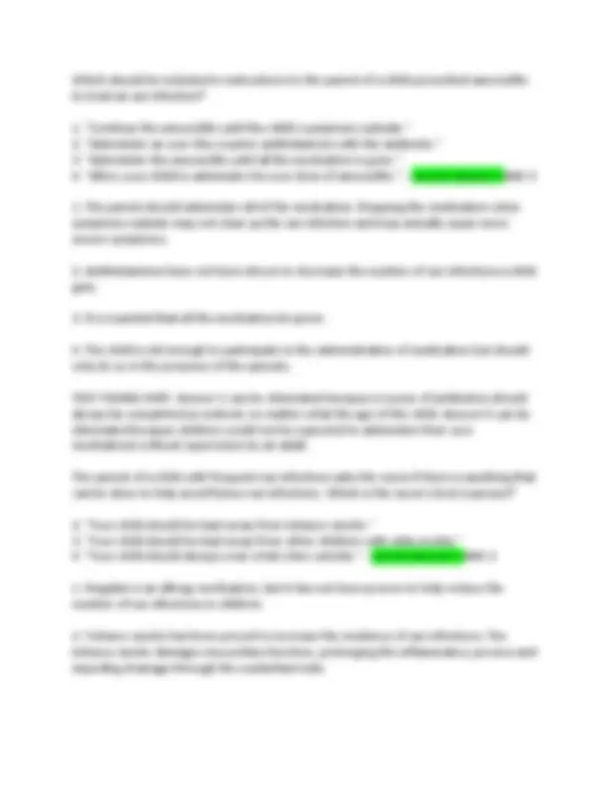
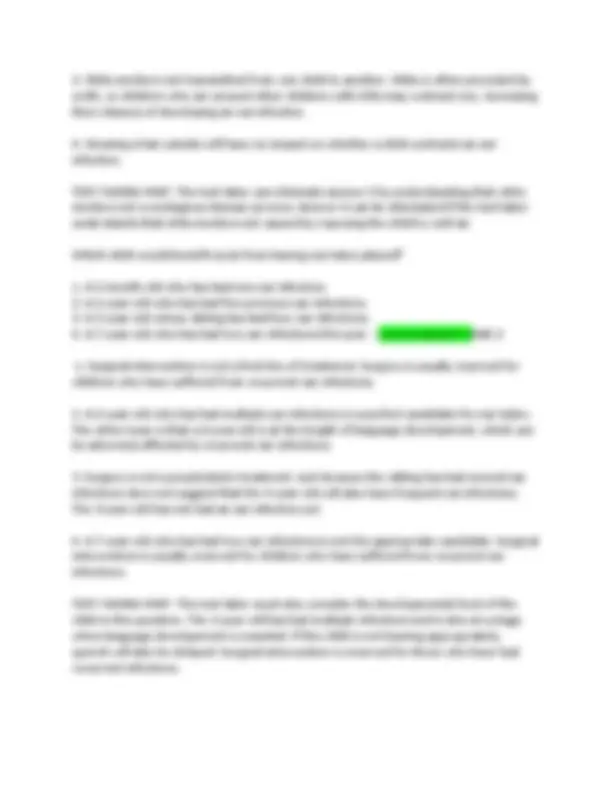
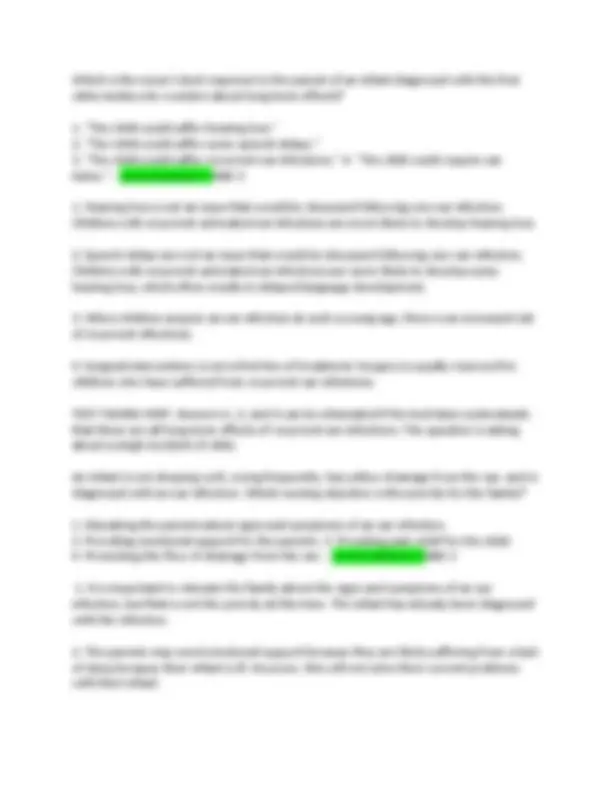
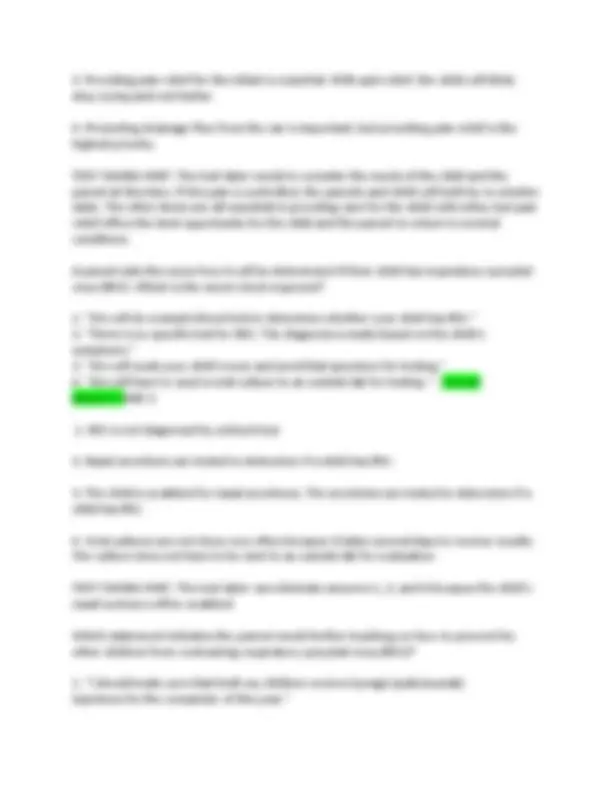
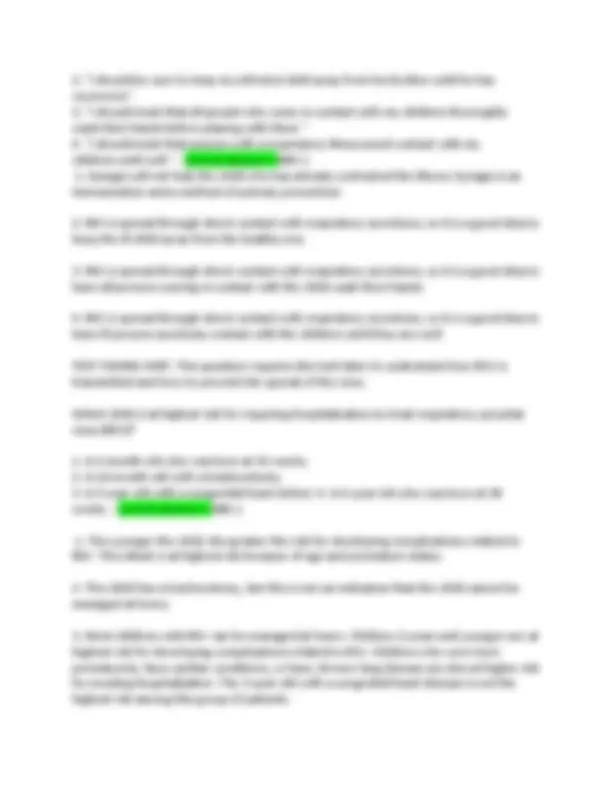
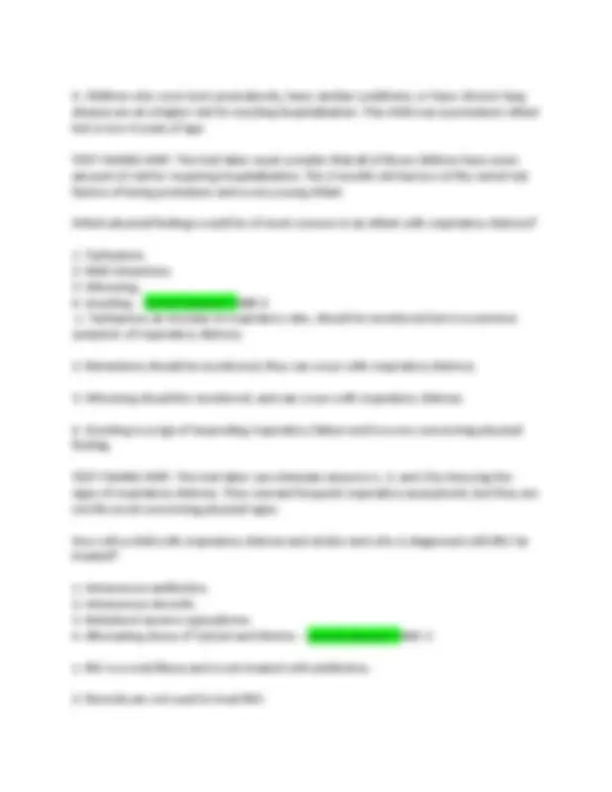
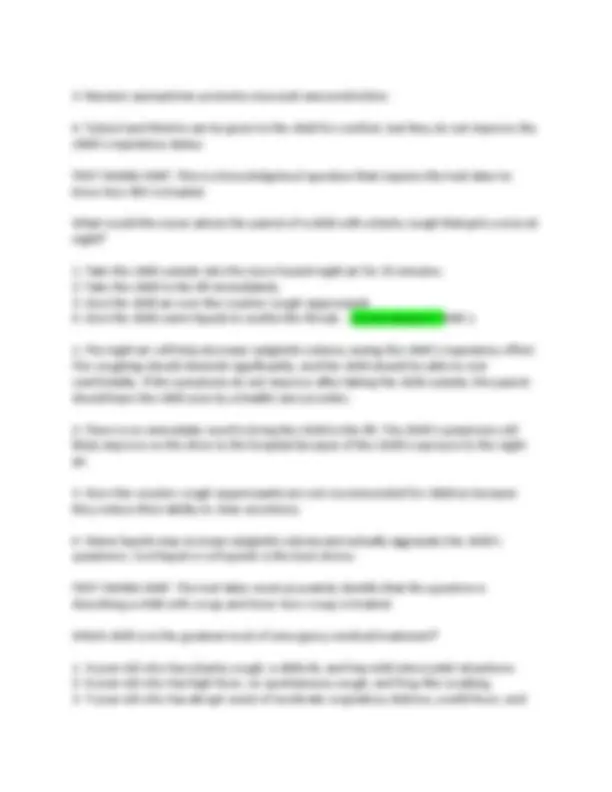
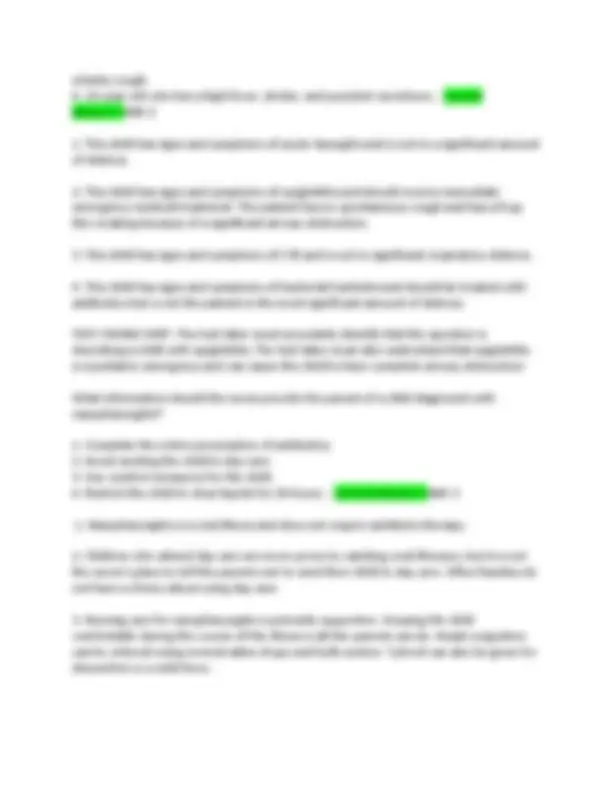
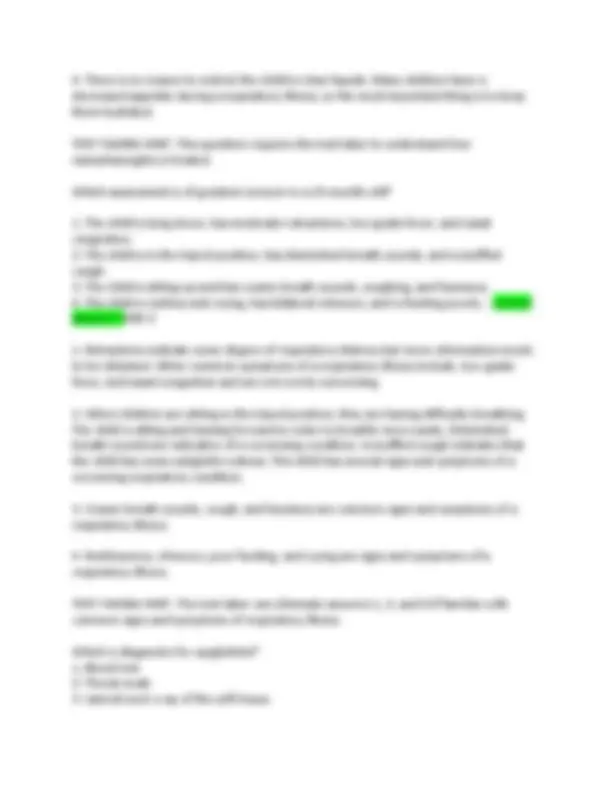
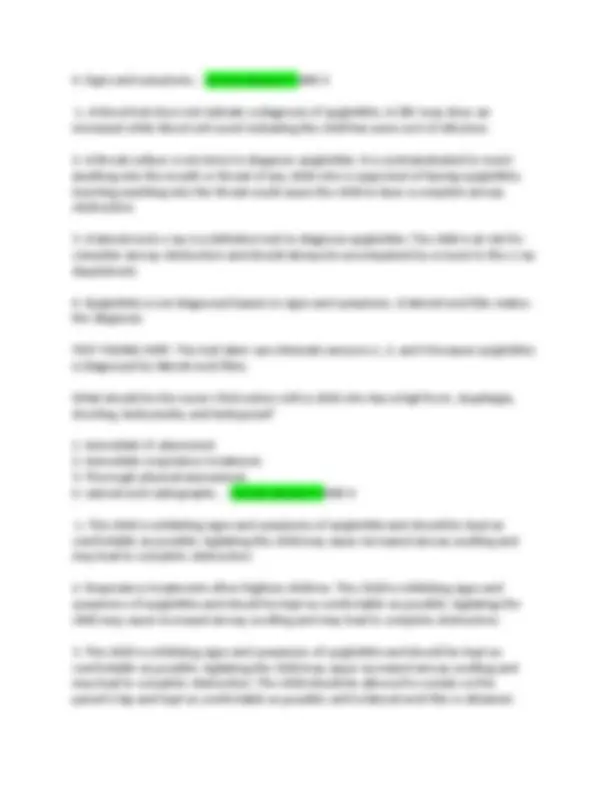
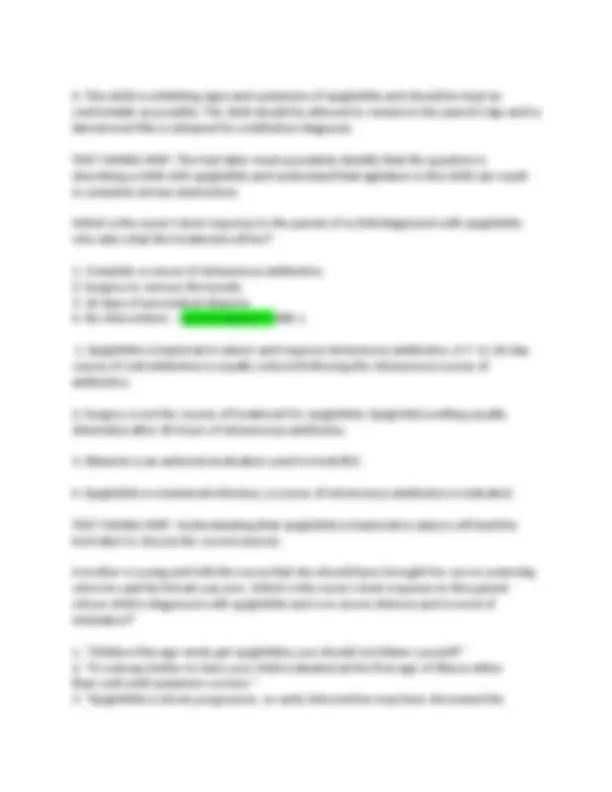
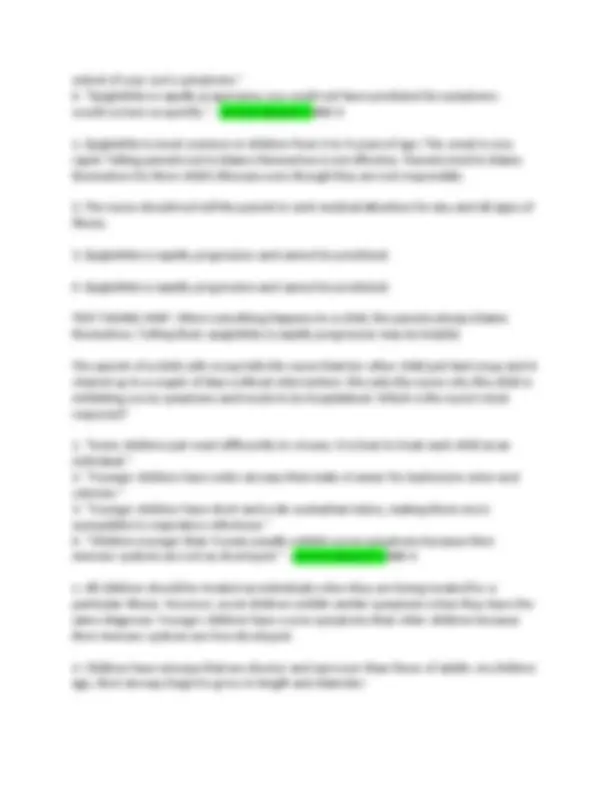
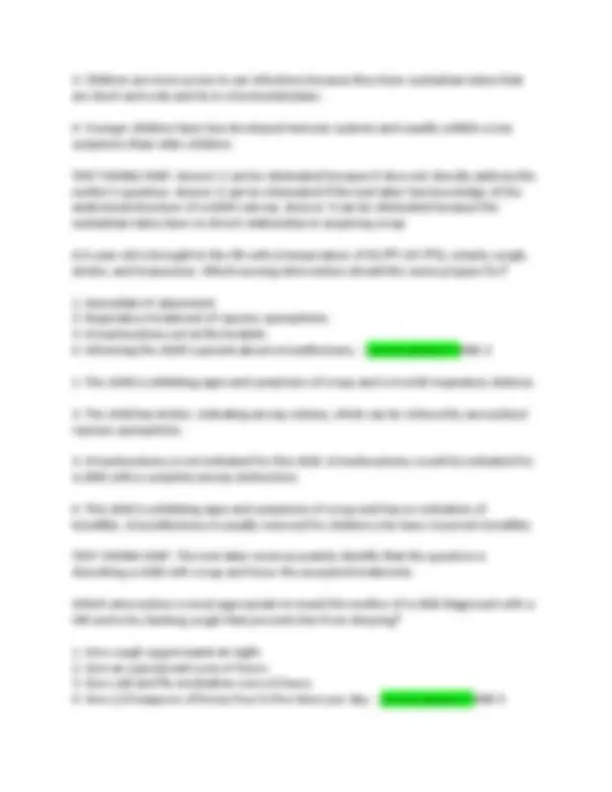

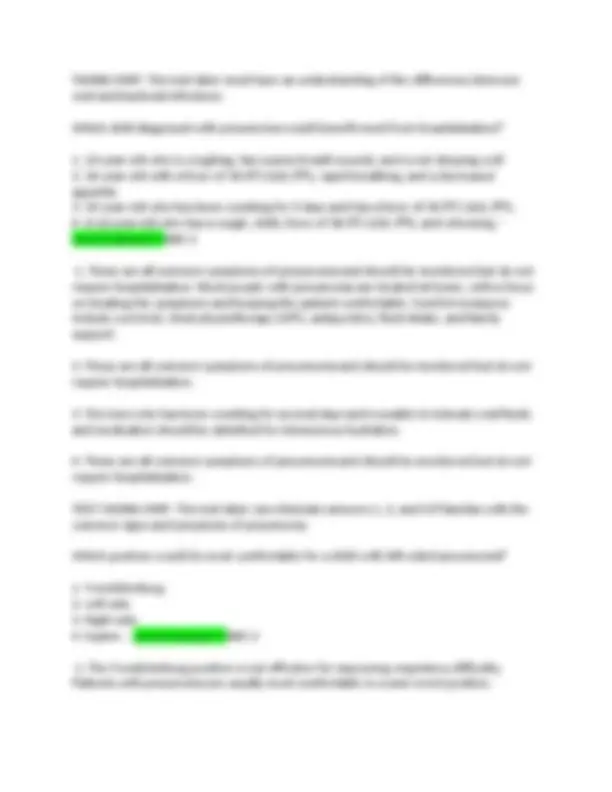
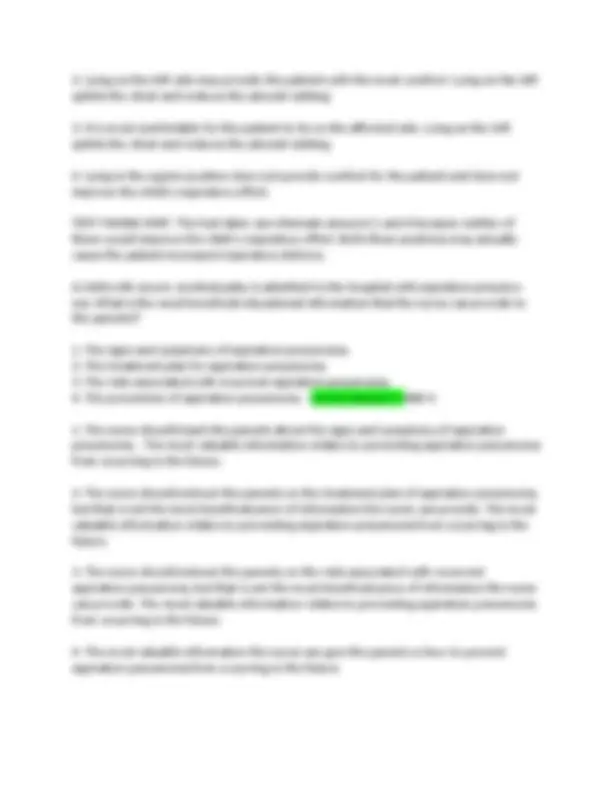
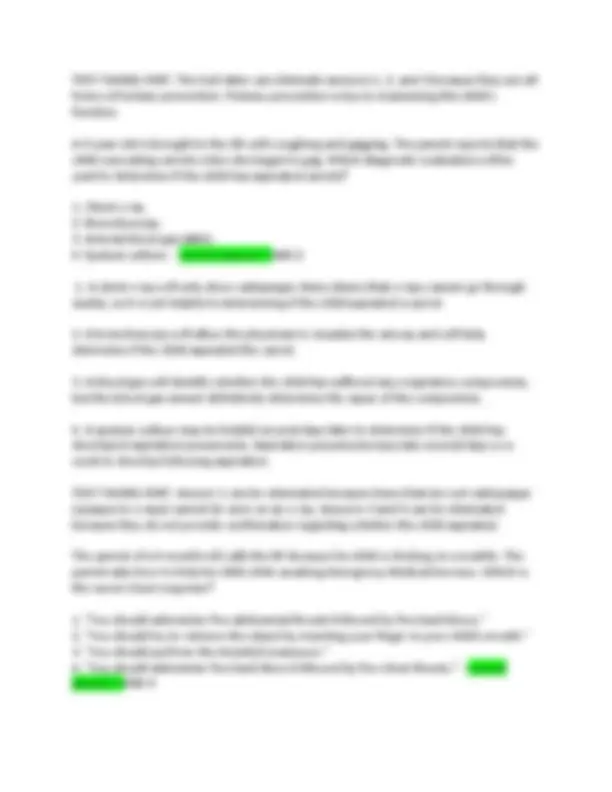
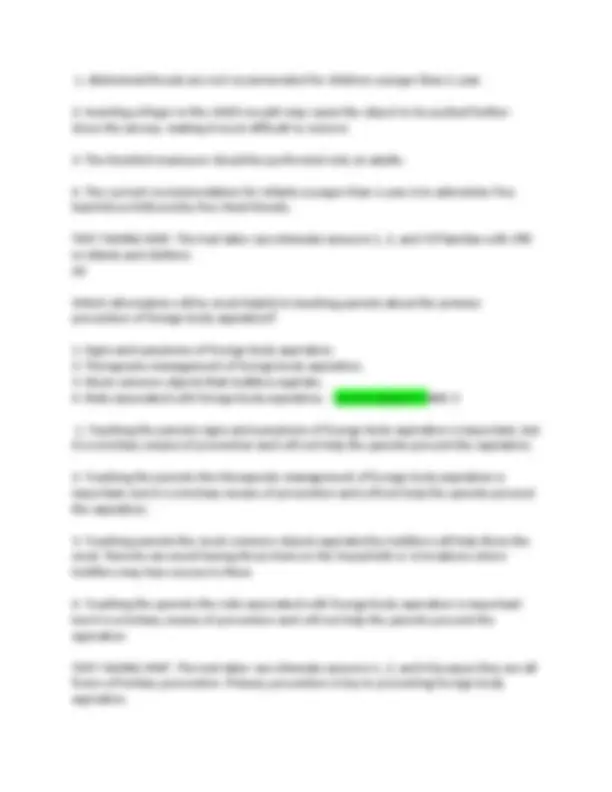
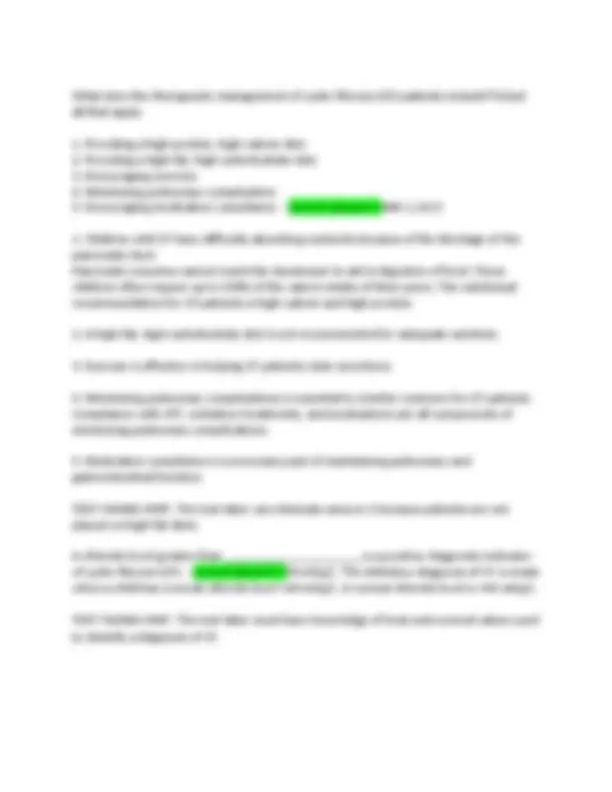


Study with the several resources on Docsity

Earn points by helping other students or get them with a premium plan


Prepare for your exams
Study with the several resources on Docsity

Earn points to download
Earn points by helping other students or get them with a premium plan
Community
Ask the community for help and clear up your study doubts
Discover the best universities in your country according to Docsity users
Free resources
Download our free guides on studying techniques, anxiety management strategies, and thesis advice from Docsity tutors
How does the nurse interpret the laboratory analysis of a stool sample containing excessive amounts of azotorrhea and steatorrhea in a child with cystic fibrosis (CF)? The values indicate the child is 1. Not compliant with taking her vitamins. 2. Not compliant with taking her enzymes. 3. Eating too many foods high in fat. 4. Eating too many foods high in fiber. - correct answer>>ANS 2 2. If the child were not taking enzymes, the result would be a large amount of undigested food, azotorrhea, and steatorrhea in the stool. Pancreatic ducts in CF patients become clogged with thick mucus that blocks the flow of digestive enzymes from the pancreas to the duodenum. Therefore, patients must take digestive enzymes with all meals and snacks to aid in absorption of nutrients. Often, teens are noncompliant with their medication regimen because they want to be like their peers.
Typology: Exams
1 / 38

This page cannot be seen from the preview
Don't miss anything!































How does the nurse interpret the laboratory analysis of a stool sample containing excessive amounts of azotorrhea and steatorrhea in a child with cystic fibrosis (CF)? The values indicate the child is
The parent of a 4-month-old with cystic fibrosis (CF) asks the nurse what time to begin the child's first chest physiotherapy (CPT) each day. Which is the nurse's best response?
The parents of a 5-week-old have just been told that their child has cystic fibrosis (CF). The mother had a sister who died of CF when she was 19 years of age. The parents are sad and ask the nurse about the current projected life expectancy. What is the nurse's best response?
TEST-TAKING HINT: The test taker can eliminate answer 4 given a basic understanding of interventions to improve respiratory function.
TEST-TAKING HINT: The test taker can eliminate answers 2, 3, and 4 by knowing that diminished breath sounds are a sign the patient has a worsening condition. The other bit of information that is essential in this problem is the child's age. The younger the child, the faster the respiratory status can diminish. Which breathing exercises should the nurse have an asthmatic 3-year-old child do to increase her expiratory phase?
Which should be included in instructions to the parent of a child prescribed amoxicillin to treat an ear infection?